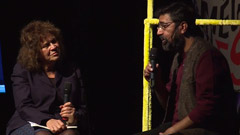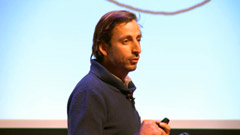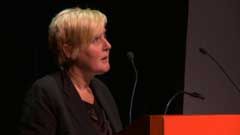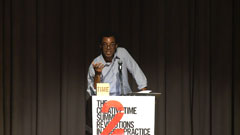
THE LEONORE ANNENBERG PRIZE
FOR ART AND SOCIAL CHANGE
The Leonore Annenberg Prize for Art and Social Change was granted from 2009 – 2014 in the spirit of the achievements made possible by Mrs. Annenberg’s generosity, passion for humanitarian causes, and devotion to the public good. It advanced Creative Time’s 40-year-long commitment to commissioning and presenting groundbreaking, historically important artwork and fostering a culture of experimentation and change. The Leonore Annenberg Prize for Art and Social Change was generously supported by Elizabeth K. Sorensen and the Rosenstiel Foundation.
THE ANNENBERG RETREAT AT SUNNYLANDS
A partnership between Creative Time and The Annenberg Retreat at Sunnylands enabled the Prize recipient to convene a select group of thought leaders, policy experts, activists, and others prior to the Summit for a discussion of the issues at the heart of their work and to develop actionable steps and achieve specific outcomes. The artist and other discussion participants then engaged in a dialogue on the Summit stage, sharing the content and results of their meeting.

PAST RECIPIENTS
2014 ANNENBERG PRIZE RECIPIENT
AMAR KANWAR
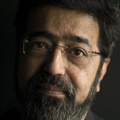 In 1984, two events compelled Amar Kanwar to activism, research and filmmaking: the mass violence and brutality against Sikhs in Delhi following the assassination of Indian Prime Minister Indira Gandhi, and the toxic gas leak at the Union Carbide pesticide plant in Bhopal, which exposed thousands to dangerous chemicals, resulting in several deaths. Since then, Kanwar’s filmmaking practice has challenged the limits of the medium in order to create complex narratives traversing several terrains such as labor and indigenous rights, gender, religious fundamentalism, and ecology. Kanwar’s key works have been A Season Outside, a reflective essay film on violence; A Night of Prophecy, on the poetry of resistance; the multiple projection installations The Lightning Testimonies, about sexual violence, and The Torn First Pages, on the Burmese democracy movement.
In 1984, two events compelled Amar Kanwar to activism, research and filmmaking: the mass violence and brutality against Sikhs in Delhi following the assassination of Indian Prime Minister Indira Gandhi, and the toxic gas leak at the Union Carbide pesticide plant in Bhopal, which exposed thousands to dangerous chemicals, resulting in several deaths. Since then, Kanwar’s filmmaking practice has challenged the limits of the medium in order to create complex narratives traversing several terrains such as labor and indigenous rights, gender, religious fundamentalism, and ecology. Kanwar’s key works have been A Season Outside, a reflective essay film on violence; A Night of Prophecy, on the poetry of resistance; the multiple projection installations The Lightning Testimonies, about sexual violence, and The Torn First Pages, on the Burmese democracy movement.
Kanwar’s recent work, The Sovereign Forest (2012, ongoing) is a profound interrogation of the politics of violence and justice. Initiating a creative response to our understanding of crime, human rights, and ecology, it engages viewers in manifold ways of seeing and comprehending as it presents a set of propositions that investigate the notion of “poetry as evidence.”
Emerging from the conflict in Odisha, India, The Sovereign Forest serves as a memorial to the land and lives lost to industrialization even as it provides unique insight into the land-acquisition process by both the government and corporations for future industrial sites. In the context of this “modern war,” The Sovereign Forest takes on multiple reincarnating identities, as an art installation, a library, an archive, a school, a public trial, as well as a proposition for a local space that engages with politics.
Kanwar has received numerous awards, including the Edvard Munch Award for Contemporary Art, Norway; an Honorary Doctorate in Fine Arts from Maine College of Art; the Golden Gate Award, San Francisco International Film Festival; and the Golden Conch, Mumbai International Film Festival.
2013 ANNENBERG PRIZE RECIPIENTS
KHALED HOURANI
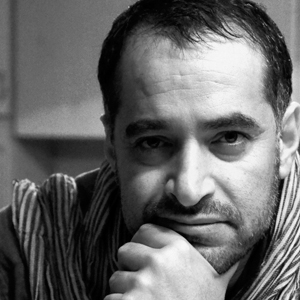 Khaled Hourani, born in Hebron, Palestine, is an artist, writer, and curator based in Ramallah, Palestine, where he is currently Director of the International Academy of Art Palestine. Hourani’s artistic practice often responds to the surrealism and comic absurdity of current events. For his 2011 work titled Picasso in Palestine, he brought Picasso’s painting Buste de Femme from the Van Abbemuseum, in Eindhoven, Netherlands, to Ramallah for an exhibition examining the complicated ways in which art enters a war zone and transcends geopolitical borders. The project was documented and later turned into an award-winning film. In 2007, when the political party Kadima (Hebrew for “forward”), which was formed as a response to the rise of radical right-wing groups, published its manifesto in Israeli newspapers, Hourani translated the text into Arabic and published it in one of the most widely-read Palestinian newspapers, replacing every mention of ‘Palestine’ and ‘Palestinian’ with ‘Israel’ and ‘Israeli,’ and vice versa. The work, entitled Kadima, resulted in scores of inquiries about how to contact the nonexistent Palestinian “Forward” party.
Khaled Hourani, born in Hebron, Palestine, is an artist, writer, and curator based in Ramallah, Palestine, where he is currently Director of the International Academy of Art Palestine. Hourani’s artistic practice often responds to the surrealism and comic absurdity of current events. For his 2011 work titled Picasso in Palestine, he brought Picasso’s painting Buste de Femme from the Van Abbemuseum, in Eindhoven, Netherlands, to Ramallah for an exhibition examining the complicated ways in which art enters a war zone and transcends geopolitical borders. The project was documented and later turned into an award-winning film. In 2007, when the political party Kadima (Hebrew for “forward”), which was formed as a response to the rise of radical right-wing groups, published its manifesto in Israeli newspapers, Hourani translated the text into Arabic and published it in one of the most widely-read Palestinian newspapers, replacing every mention of ‘Palestine’ and ‘Palestinian’ with ‘Israel’ and ‘Israeli,’ and vice versa. The work, entitled Kadima, resulted in scores of inquiries about how to contact the nonexistent Palestinian “Forward” party.
LAURIE JO REYNOLDS
 Laurie Jo Reynolds, a native of Atlanta, Georgia, is an artist, policy advocate and researcher whose work for the past two decades has countered the media’s demonization of people in prison. Her work takes the form of “Legislative Art,” which participates and intervenes in government systems, with the goal of concrete political change. For the past eight years, Reynolds has focused on Tamms Correctional Center, the notorious supermax prison in southern Illinois designed for sensory deprivation. In 2007, she collaborated with men formerly and currently incarcerated at Tamms, their families and other artists to launch Tamms Year Ten, a volunteer grassroots legislative campaign to reform or close the prison. Due in part to her extraordinary efforts, Tamms supermax—which came to symbolize our increasingly punitive, dehumanizing and counter-productive criminal justice system—was shuttered on January 4, 2013. In addition to relentless lobbying, the campaign featured cultural projects such as Photo Requests from Solitary, which invited men in isolation to request a photograph of anything at all, real or imagined.
Laurie Jo Reynolds, a native of Atlanta, Georgia, is an artist, policy advocate and researcher whose work for the past two decades has countered the media’s demonization of people in prison. Her work takes the form of “Legislative Art,” which participates and intervenes in government systems, with the goal of concrete political change. For the past eight years, Reynolds has focused on Tamms Correctional Center, the notorious supermax prison in southern Illinois designed for sensory deprivation. In 2007, she collaborated with men formerly and currently incarcerated at Tamms, their families and other artists to launch Tamms Year Ten, a volunteer grassroots legislative campaign to reform or close the prison. Due in part to her extraordinary efforts, Tamms supermax—which came to symbolize our increasingly punitive, dehumanizing and counter-productive criminal justice system—was shuttered on January 4, 2013. In addition to relentless lobbying, the campaign featured cultural projects such as Photo Requests from Solitary, which invited men in isolation to request a photograph of anything at all, real or imagined.
WATCH PRESENTATION VIDEO
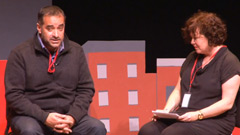
KHALED HOURANI IN CONVERSATION WITH SALLY TALLANT
WATCH PRESENTATION VIDEO
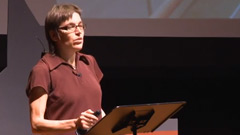
LAURIE JO REYNOLDS IN CONVERSATION
WITH JOHN FORTÉ
2012 ANNENBERG PRIZE RECIPIENT
FERNANDO GARCÍA-DORY
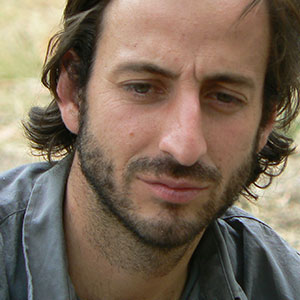 The 2012 Annenberg Prize winner is Fernando García-Dory, a Spanish artist, activist, and agroecologist who explores the relationship between contemporary culture and the natural world in his work. He investigates the myriad impacts of post-industrial capitalism upon rural communities and landscapes. Driven by a belief that art must be “proactive, not just reactive action,” García-Dory has become a leader in the field of socially engaged art and a pioneer of a new field connecting art and agroecology. Beginning with his 2004 project, The Shepherd’s School, in the Spanish Pyrenees, García-Dory has engaged one of the world’s most underrepresented and—at a population of an estimated 250 million—widespread communities: pastoralist and nomadic peoples. In 2007, the artist organized a conference that brought together two hundred representatives of nomadic and transhumant pastoralist communities from forty-four different countries. He had first intended the project to serve as a platform for discussion and “mutual recognition” between these groups. It quickly became much more: García-Dory’s gathering resulted in the creation of the World Alliance of Mobile Indigenous Pastoralists (WAMIP), a global organization that provides unprecedented representation and advocacy for these communities on an international scale.
The 2012 Annenberg Prize winner is Fernando García-Dory, a Spanish artist, activist, and agroecologist who explores the relationship between contemporary culture and the natural world in his work. He investigates the myriad impacts of post-industrial capitalism upon rural communities and landscapes. Driven by a belief that art must be “proactive, not just reactive action,” García-Dory has become a leader in the field of socially engaged art and a pioneer of a new field connecting art and agroecology. Beginning with his 2004 project, The Shepherd’s School, in the Spanish Pyrenees, García-Dory has engaged one of the world’s most underrepresented and—at a population of an estimated 250 million—widespread communities: pastoralist and nomadic peoples. In 2007, the artist organized a conference that brought together two hundred representatives of nomadic and transhumant pastoralist communities from forty-four different countries. He had first intended the project to serve as a platform for discussion and “mutual recognition” between these groups. It quickly became much more: García-Dory’s gathering resulted in the creation of the World Alliance of Mobile Indigenous Pastoralists (WAMIP), a global organization that provides unprecedented representation and advocacy for these communities on an international scale.
2011 ANNENBERG PRIZE RECIPIENT
JEANNE VAN HEESWIJK
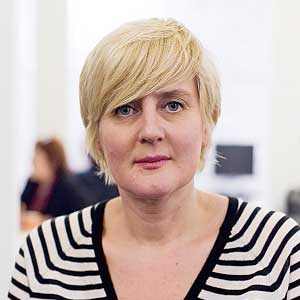 Dutch artist Jeanne van Heeswijk was awarded the Annenberg Prize in 2011 in recognition of her dedication to involving people in the communities where she sees opportunities for making social change. Her projects, which have been exhibited in internationally-renowned biennials in Venice, Busan, Taipei, and Shanghai, are realized through her integration into local communities. For her projects, which she describes as “urban curating,” she becomes an active citizen, and encourages neighbors and community members to participate in all aspects of the projects, from initial planning to a final exhibition or event. For example, she reinvigorated the Afrikaander Market in Rotterdam with the aid of market vendors and others from the neighborhood, and last year, in Moscow, she installed living statues of people marginalized by neoliberal political reforms near Russia’s Ministries of Education, the Interior, Labor, and Social Affairs.
Dutch artist Jeanne van Heeswijk was awarded the Annenberg Prize in 2011 in recognition of her dedication to involving people in the communities where she sees opportunities for making social change. Her projects, which have been exhibited in internationally-renowned biennials in Venice, Busan, Taipei, and Shanghai, are realized through her integration into local communities. For her projects, which she describes as “urban curating,” she becomes an active citizen, and encourages neighbors and community members to participate in all aspects of the projects, from initial planning to a final exhibition or event. For example, she reinvigorated the Afrikaander Market in Rotterdam with the aid of market vendors and others from the neighborhood, and last year, in Moscow, she installed living statues of people marginalized by neoliberal political reforms near Russia’s Ministries of Education, the Interior, Labor, and Social Affairs.
2010 ANNENBERG PRIZE RECIPIENT
RICK LOWE
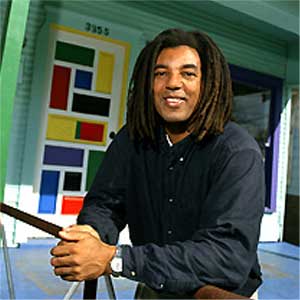 Rick Lowe received the Annenberg Prize in 2010 in honor of Project Row Houses, a project he began in 1993 in Houston’s Northern Third Ward. Moved by the imminent demolition of several blocks of shotgun-style houses in the neighborhood—one of the city’s oldest African American communities—Lowe came up with a plan to preserve the neighborhood’s historic homes and provide essential services for its residents. Project Row Houses has created homes for single mothers and their children, residency spaces for artists to create new work with the local community, health centers, community gardens, and more. Originally occupying a group of twenty-two houses covering one-and-a-half city blocks, Project Row Houses has grown to include over forty renovated properties, containing exhibition spaces, a literary center, a multimedia performance art space, offices, low-income housing, and other amenities. The project exemplifies the principles of renowned artist John Biggers, who spoke about art as a way to create an effective community, as it integrates art into the fabric of everyday life. It is a space for producing and celebrating culture, a model for community revitalization, a forum for education, and a way to preserve the architecture and history of a neighborhood.
Rick Lowe received the Annenberg Prize in 2010 in honor of Project Row Houses, a project he began in 1993 in Houston’s Northern Third Ward. Moved by the imminent demolition of several blocks of shotgun-style houses in the neighborhood—one of the city’s oldest African American communities—Lowe came up with a plan to preserve the neighborhood’s historic homes and provide essential services for its residents. Project Row Houses has created homes for single mothers and their children, residency spaces for artists to create new work with the local community, health centers, community gardens, and more. Originally occupying a group of twenty-two houses covering one-and-a-half city blocks, Project Row Houses has grown to include over forty renovated properties, containing exhibition spaces, a literary center, a multimedia performance art space, offices, low-income housing, and other amenities. The project exemplifies the principles of renowned artist John Biggers, who spoke about art as a way to create an effective community, as it integrates art into the fabric of everyday life. It is a space for producing and celebrating culture, a model for community revitalization, a forum for education, and a way to preserve the architecture and history of a neighborhood.
2009 ANNENBERG PRIZE RECIPIENT
THE YES MEN
 The recipients of the inaugural Annenberg Prize, in 2009, were the Yes Men, the duo that has agreed their way into the fortified compounds of commerce, asked questions, and then smuggled out the stories of their hijinks to provide a public glimpse at the behind-the-scenes world of business. This legendary group of culture jammers is, through their longstanding practice of invading and subverting modes of corporate communication, at the forefront of a movement to produce substantive change in our world. They are well known for projects ranging from impersonating representatives of major corporations to the distribution of thousands of copies of a simulated edition of the New York Times featuring idealistic, progressive headlines.
The recipients of the inaugural Annenberg Prize, in 2009, were the Yes Men, the duo that has agreed their way into the fortified compounds of commerce, asked questions, and then smuggled out the stories of their hijinks to provide a public glimpse at the behind-the-scenes world of business. This legendary group of culture jammers is, through their longstanding practice of invading and subverting modes of corporate communication, at the forefront of a movement to produce substantive change in our world. They are well known for projects ranging from impersonating representatives of major corporations to the distribution of thousands of copies of a simulated edition of the New York Times featuring idealistic, progressive headlines.


